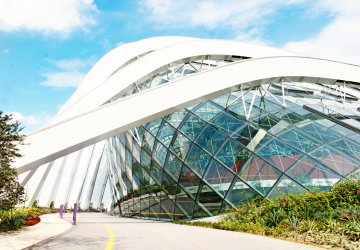
For Earth Day this year (April 22nd), I want to revisit a concept that Planon wrote a lot about last year. My colleague Sanne Oostendorp wondered whether the “New World of Work” is really as sustainable as we think it is, while I was writing about the benefits of working from home on reducing commuter traffic. These differing opinions on the same topic of commuting try to get to the same simplistic sustainability truth: If we make less environmentally harmful choices – then all of us benefit.
The difference in this case is location. In the United States, there are the obvious benefits of reducing greenhouse gases by reducing the number of people commuting, or commuting outside of peak hours. Depending on the percentage of employees using cars to commute, flexible work options yield a reduction in the overall use of fossil fuels, a reduction in the emission of harmful substances, less noise, and lower traffic intensity.
In fact, the numbers are quite impressive:
- 81% of workers in the United States commute alone to work, driving an average of 18.8 miles to get there.
- Gasoline has an energy content of 9.7 kWh/L, so the average commuter will consume 12,456 kWh per year.
- This is more than the total energy consumed by office buildings, which is approximately 11,811 kWh per year per employee according to the Commercial Buildings Energy Consumption Survey.
While flexible work options like working from home may cause home energy consumption and waste generation to go up slightly — heating spaces that would otherwise be empty during the day, turning on the TV during lunch, or lighting extra rooms — the eco-footprint is negligible, especially when you consider that office equipment energy consumption rate is twice that of home office equipment energy consumption. Compared to the fossil fuel consumption and subsequent emissions of daily commuters, this is nothing.
Working from home
Until the United States reaches a tipping point in alternative transportation, like in the Netherlands where 30% of employees commute by bike, it is far more sustainable to encourage employees to work from home or have flexible workplace desking options. These options reduce the amount of square footage needed and can contribute to significant cost savings.
Not surprisingly, a recent Forbes article revealed that 82 of the top 100 “Best companies to work for” allow employees to work outside the office 20% of the time. When companies embrace alternative workplaces, they also need new ways to foster more efficient collaboration, knowledge-sharing, flexibility, speed, innovation, and productivity through technology.
In short, next-generation facilities management software can significantly contribute to solving one of today’s bigger societal and sustainability problems by simply reducing the number of cars on the road by creating flexible options for workplaces.
By reducing the demand for commuting, and by providing flexible work locations, forward-thinking companies are truly looking at the triple bottom line through sustainability: economic, ecologic and social.





















